Wired2Fire Diablo MaXcore Gaming PC Review
Wired2Fire Diablo MaXcore Gaming PC
The Diablo MaXcore delivers diabolic gaming without costing your soul.
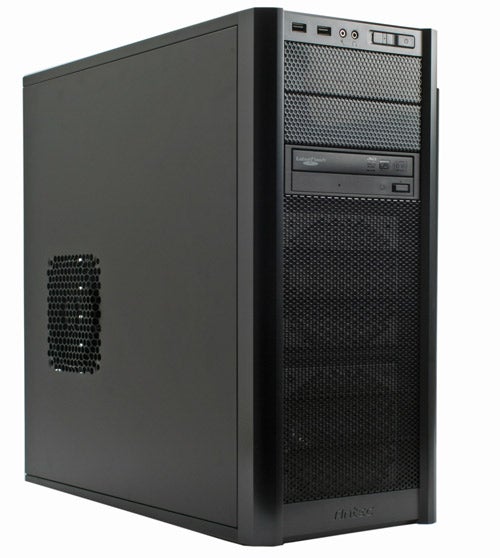
Verdict
Key Specifications
- Review Price: £830.00
One of the concerns with buying from a small system integrator instead of one of the big players like Dell or HP is that they might go bust just when you need that technical support line or the warranty you paid so much extra for. This is especially true in the current, shall we say, difficult economic climate. However, Wired2Fire has been around for a while. In fact, we reviewed a system from the company back in 2006; the Wired2Fire Pyro 64-FX. The Pyro didn’t exactly get a glowing recommendation though, so let’s see if the Diablo MaXcore can turn things around.
Before we get onto the PC proper, it’s certainly worth mentioning the bundle that ships with it. Unlike most PC builders, Wired2Fire gives you a whole slew of stuff in the box – the motherboard box as it happens. This includes all the adapters, manuals and software that come with the retail graphics card in your system, the bits and bobs from your PSU and motherboard. I also found the case’s original 3.5in drive bay cover, and a copy of Windows Vista Premium OEM in its jewel case. Best of all, there is a full colour Wired2Fire manual which deals with setup and basic maintenance of your PC. Finally there’s a football-themed cloth CD-folder thrown in.
Frankly, including all these bits and bobs is a brilliant idea, and gives you far more flexibility when upgrading than most pre-assembled PCs. The manual will also undoubtedly come in handy for many. Other system integrators take note.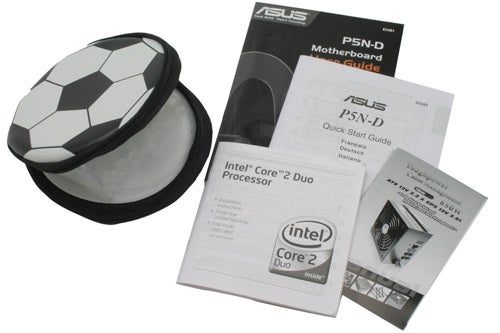
Getting onto the PC itself, you get some pretty decent core components, including an Intel Core 2 Duo E4800 overclocked to a blisteringly-fast 3.6GHz, an overclocked nVidia GeForce GTX260 and 4GB of 800MHz DDR2 memory, backed by a 500GB hard drive. While none of these are top-of-the-line, they do offer great bang for your buck, which is reflected by the £830 asking price.
Visually, this is a very different beast to the Pyro. Instead of a custom-painted curvy case with side windows and a door, an Antec Three Hundred provides a solid black steel box with a minimum of embellishments and its drives exposed to the gaze of all and sundry. But that’s no bad thing; Antec makes excellent cases, and the Three Hundred is no exception.
The Antec Three Hundred Case is unapologetically square but maintains a very clean look. The only curves to be found are on the plastic surround cradling the metal meshwork at the front. The case is quite compact, measuring only 458 x 465 x 205mm (WxDxH) and can be had for as little as £35 online – but that just proves that it’s a bit of a bargain, not that it lacks quality.
A small plastic section at the top offers two USB ports, headphone and microphone, but there’s no e-SATA here unfortunately. Next to these are the stylish power and reset buttons. Both buttons are well constructed with a good feel when pressed – reset is narrow and recessed making accidental presses unlikely.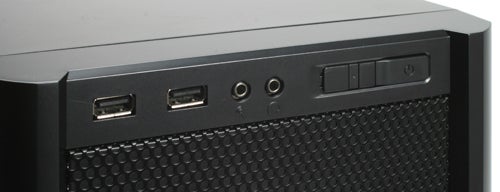
Despite its external dimensions, the Three Hundred’s excellent layout makes it very spacious. Two fans come standard with the case; a 120mm one at the back, and a 140mm one at the top. The fans have hardware speed switches which are both set to medium, providing a theoretical balance between noise and ventilation. These alone already give you good air-flow, but there is provision for a further three 120mm fans. Two of these are mountable behind the Antec’s front mesh, where an air-filter is already pre-installed. Here Wired2Fire has mounted an extra fan to pull air in at the front, as well as giving the austere case a bit of gaming bling with its red LED lighting. 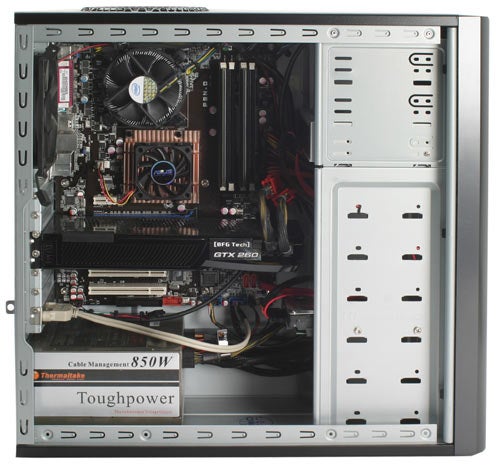
Opening the computer up is achieved by simply removing two thumb-screws. Inside Wired2Fire has used normal screws, even though Antec does provide a whole bag of thumb screws. So, if you want to replace or change anything you’ll have to get your screwdriver out. While this is a pity, it must be said that the company has done a great job on the rest of the computer’s internal layout, which is very clean. Cables are routed to maximise airflow, with any slack folded away using cable-ties.
A factor which also contributes to tidy layout is the modular Thermaltake ToughPower 850W PSU. Of course Wired2Fire has only attached the necessary cables, though again you do get the rest in the box. Unfortunately, I have discovered that the company is switching to a non-modular SilverStone model for retail samples, but excess cables should be nicely tucked out of the way.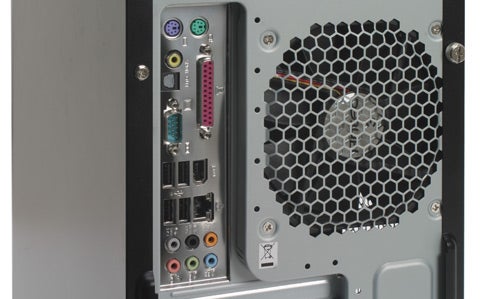
The motherboard used is Asus’ P5N-D, based on nVidia’s nForce 750i SLI chipset. While Asus is generally a great name in motherboards, we’re not bowled over by this model, especially when compared to the excellent MSI P7N-SLI Platinum we reviewed. The selection of the P5N-D’s legacy ports alone is enough reason for disappointment. You do get Gigabit LAN, FireWire, four USB 2.0 ports and both co-axial and optical digital audio outputs in addition to the six analogue ones. But in 2008, I fail to see the need for PS/2, serial or parallel ports on any consumer machine, let alone a cutting-edge gaming rig! Also a major dent is the lack of any e-SATA ports, again something any modern gaming PC should have. At least Wired2Fire has installed the optional USB bracket, giving you a further two USB ports at the MaXcore’s back.
At least the Asus motherboard is passively cooled, which – together with the large case fans – should have made for a fairly quiet system. In reality, however, the Diablo MaXcore is noisier than you might expect. This is due to several factors, the most annoying of which is that Wired2Fire has chosen to install the ”optional” chipset fan over the large copper heatsink on this ”passively cooled” board.
This fan is only included for use in water-cooled cases or other scenarios where there is no airflow over the motherboard; even on Asus’ own website there is a paragraph about the P5N-D’s “fanless design”. With the Antec Three Hundred providing more than adequate airflow, all Wired2Fire has achieved is added noise pollution. If it was done for stability, then the company should really switch to using another motherboard, preferably one with a decent selection of ports while it’s at it. 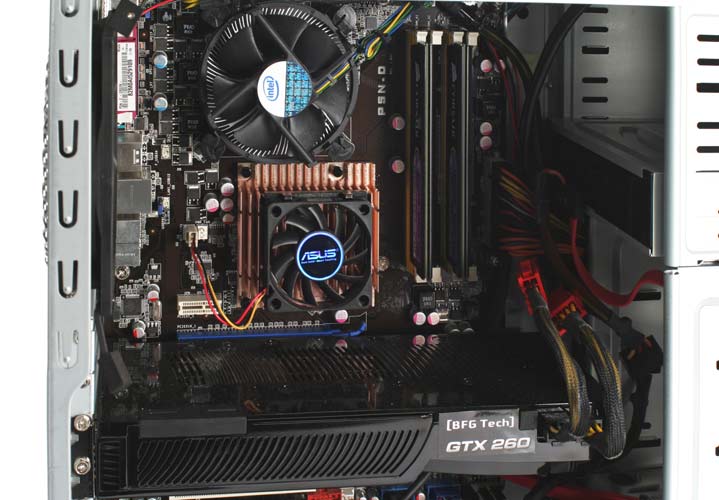
To get the system down to unobtrusive noise levels, you’ll want to set the large 140mm case fan to ‘low’ using its own hardware switch, and activate the motherboard’s Q-Fan2 functionality to reduce the RPM of the Wired2Fire 120mm fan at the Three Hundred’s front and the processor’s stock cooler. Though Wired2Fire obviously recommends leaving everything at its original settings, changing the settings of these fans will not void your warranty.
At the revised fan settings, temperatures remained within fail-safe parameters, with the overclocked CPU not going above 65 degrees. And though the MaXcore was now by no means silent, it was acceptable for a gaming system. Ideally, you’ll want to specify the optional Thermaltake Golden Orb II CPU cooler, which adds an extra £22 but should be far quieter than Intel’s. And since neither the dual-slot graphics card nor the power supply exhaust warm air into the case, we’d go so far as to say the unnecessary Northbridge-heatsink fan can safely be disconnected – though you’ll need to check with Wired2Fire before taking this last step. 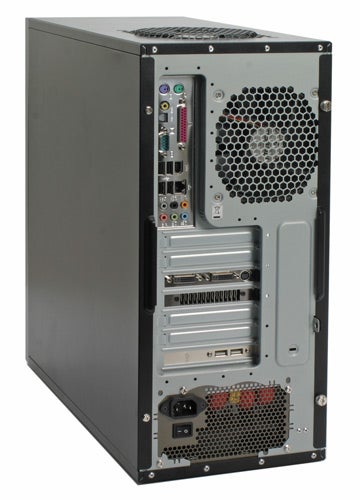
Getting back to the rest of the PC, fortunately there’s nothing else to really complain about. If I was being particularly picky, I might have wished that one of the case’s remaining 5.25in drive bays be filled with a card reader and media bay (including e-SATA) as standard, but some users won’t care.
Moving on, the black heat spreaders on the two sticks of Corsair 800MHz DDR2 memory go well with both the motherboard’s black PCB and the black metal shroud of the factory-overclocked BFG-Tech GeForce GTX 260. A Sony/NEC SATA DVD-writer takes care of optical media, with LabelFlash (an equivalent to LightScribe) offering laser-labelling on compatible discs, while the Western Digital 500GB Caviar SE16 with 16MB cache is a reliable but unremarkable choice for permanent storage.
The MaXcore comes with the 64-bit version of Vista Premium. This is good in that it allows Windows an any applications to take advantage of the full 4GB of memory. The downside is that the system will be compatible with fewer of the older games, so gamers who have a soft spot for retro or like buying older budget games beware.
Bootup to the desktop takes 36 seconds, which is fairly speedy. This is partially thanks to the commendable lack of bloatware; in fact, there really isn’t much pre-installed, apart from Adobe Acrobat Reader 8 – which is exactly what many gamers will want. The only other icons you’ll find are the recycle bin and a shortcut to ‘play Portal now’, which is automatically installed by the nVidia drivers. However, since this only leads to a purchase page for the game, I wish Wired2Fire had removed it altogether.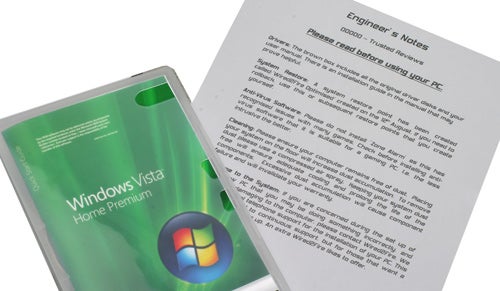
As you would expect considering what it packs under the hood, the Diablo MaXcore absolutely stomps most games, not to mention applications. The only machine to beat it for under a £1,000 is the CyberPower Gamer Infinity Crossfire-HD. Using the same processor, but overclocked to a full 4GHz rather than the MaXcore’s 3.6GHz, and with twin ATI Radeon 4870’s in CrossFire, there is a significant gap between the two systems in some games. In Crysis at 1,920 x 1,200 and 2xAA, for example, the Diablo MaXcore managed a barely playable 23fps, while the CyberPower churned out 50fps.
However, the CyberPower does demand a £180 premium and comes with its own problems, including of course a significantly higher power draw. And performance for the Diablo MaXcore in almost every other game is exemplary, as highlighted by the 58fps it managed at 1,920 x 1,200 and 4xAA in Call of Duty 4.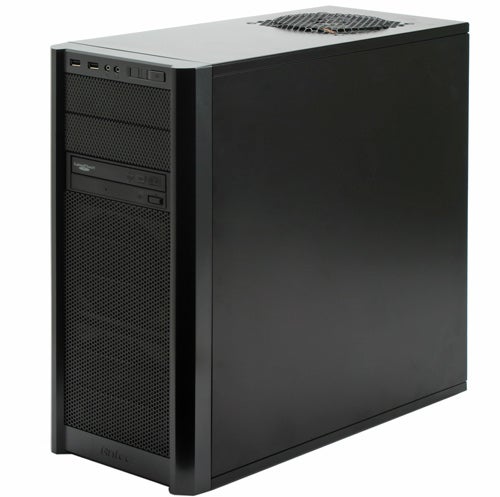
In terms of overall value, the MaXcore is a very attractive proposition for £830, though depending on your needs it’s not necessarily the best deal out there. It’s also worth noting that Wired2Fire offers a free 9am to 6:30pm technical support line with UK staff, and best of all, the company has just switched to a local rate number. While this service is especially nice for those who are new to PCs or PC gaming, a similar service is offered by some competitors, including CyberPower. As far as the warranty goes, one year is slightly below standard, but it is collect-and-return; for which many companies charge extra.
”’Verdict”’
Wired2Fire’s Diablo MaXcore is a gaming beast for a decent price. Apart from high noise levels, which can be remedied with minimal effort, there is little room for complaint, though you’ll want to spend the extra £22 on the optional Thermaltake CPU cooler.
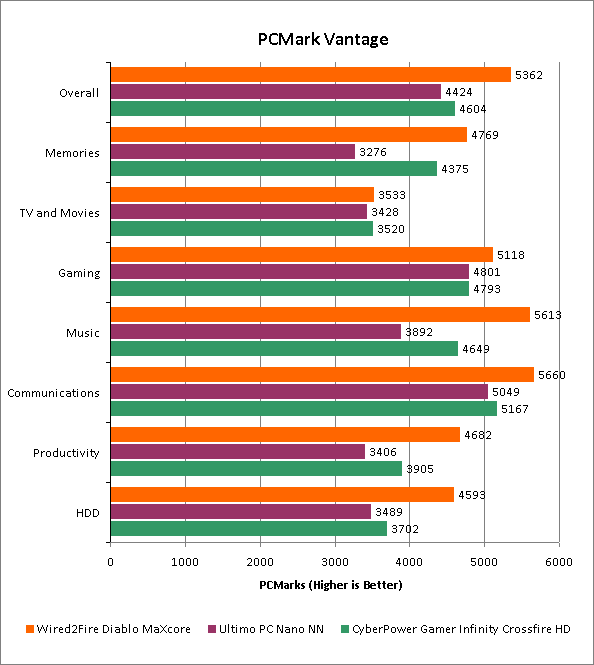
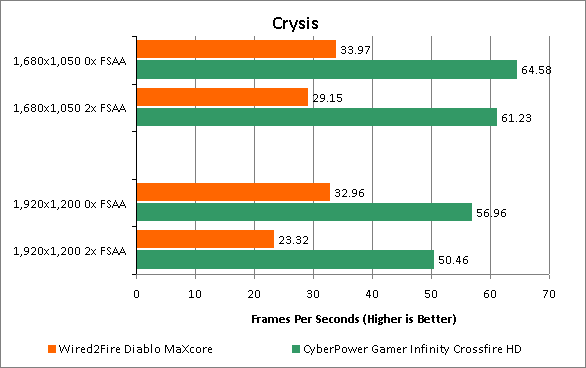
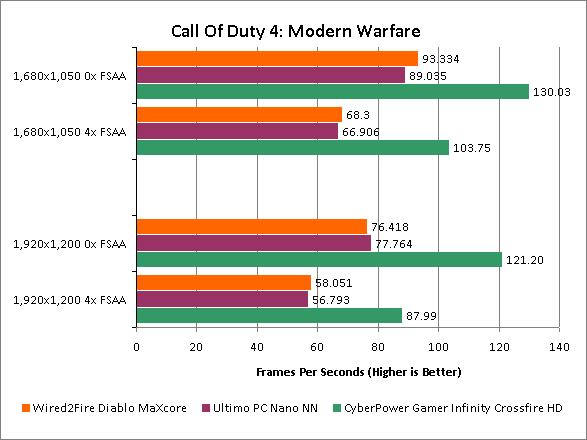
Trusted Score
Score in detail
-
Value 8
-
Features 7
-
Performance 9

